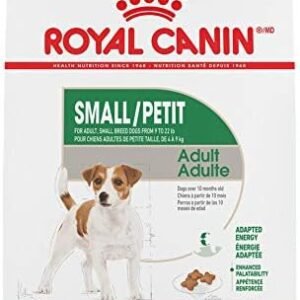Table of Contents
Signs of Pain in Dogs

It is important to note that pain in dogs can manifest in a variety of ways. Factors such as breed, age, health history, and personality can affect the signs of pain in dogs. Generally, however, discomfort or pain can be observed in a dog by a change in behavior, such as more aggressive barking, hiding, becoming more clingy, avoiding activities, limping, or trembling. In addition to physical changes, there might also be changes in appetite, reluctance to being touched, difficulty sleeping, restlessness, and reluctance to move. Even subtle signs such as reduced alertness, excessive vocalizing, furrowing the brow, or licking the same area repeatedly can indicate your dog is in pain.
Observing behavior changes over time can help a pet parent recognize when a dog is in pain. This is particularly important during older age, as older dogs can experience new aches or pains that are not indicative of any specific condition. If a dog is found to be exhibiting any of the above behaviors, it is important to contact a veterinarian who can properly diagnose and treat the cause of the pain.
Causes of Pain in Dogs
Pain in dogs can be caused by a variety of problems, from minor injuries to serious illnesses. Physically, arthritis, muscle strains, fractures, and joint pain are all common causes of pain. Injuries to the back or spine can also cause great discomfort and pain. Other causes of pain can include infections, inflammation, tumors, organ failure, and even psychological problems. For instance, older dogs may suffer from age-related conditions, such as arthritis, which can cause severe pain. Smaller breeds, like Dachshunds, may experience back pain due to the strain of their long bodies and the narrowing of their discs. Meanwhile, certain breeds, such as French Bulldogs, can suffer from allergies and skin infections which can cause great discomfort and itchiness, leading to pain. Psychological issues, such as separation anxiety, can also cause pain. A dog that is not receiving enough mental and physical stimulation can display symptoms of discomfort and create a personally distressing emotional state.
Diagnosis of Pain in Dogs
Accurately recognizing pain in dogs can be a complex endeavor as a dog’s natural instinct is to hide their vulnerabilities. However, there are some signs that are indicative of pain in dogs can be used to help make a diagnosis. Visual signs that may indicate pain in dogs can include changes in stance, posture, and gait. Dogs in pain often hold themselves differently compared to when they are not in pain and can appear crouched or stiff, especially around the hips and joints. Dogs are also more likely to become quiet and less active, and may pace as a way of trying to alleviate the discomfort they feel. Panting, vocalizing, restlessness, trembling, and seeking out seclusion are all further behaviors that can suggest that a dog is in pain.
Dog owners should also be aware of possible changes in regular, day-to-day behavior that may be indicators of pain. Compromised appetites, increased sensitivity, difficulty walking up and down stairs or jumping, and unwillingness to pursue their normal activities and hobbies are all examples of these subtle signs of pain in dogs. Computed tomography (CT) scans and ultrasounds are sophisticated methods for diagnosing pain in dogs as they are used to identify vital organs, examine blood flow, and locate bone fractures. As well, X-rays can provide detailed imagery that can allow doctors to identify arthritis, cancer, and other underlying issues that may be causing a dog pain and discomfort. All of these techniques must, however, be used in combination with a physical exam of the dog by a veterinarian in order to make an accurate determination of the cause and degree of the dog’s pain.
Treatments for Pain in Dogs

Pain can be managed in a number of different ways in dogs. The most common is through dietary changes, such as switching to a food specifically designed to help with pain relief in dogs. Other dietary changes may include adding supplements to the dog’s diet to help manage pain, as well as adding certain foods, such as turmeric, which can help reduce inflammation. Exercise is also important for relieving pain in dogs; owners should talk to their vet about appropriate exercise levels for their dog’s condition as too much activity can worsen the pain.
Physical therapy can also be a great option for helping relieve pain in dogs. Physical therapy can involve manual massage, stretching and range of motion exercises, as well as ultrasound or laser therapy. Owners should consult their veterinarian for the best solution for their dog’s condition and make sure the physical therapist is properly certified. Additionally, there are a number of natural remedies that can be used to help relieve the pain; these can include herbal remedies, such as valerian root, as well as natural anti-inflammatory remedies, like fish oil.
Medications for Pain in Dogs
Medication is often prescribed to help relieve and manage pain in dogs. There are many different types of medications used to manage pain, including both over-the-counter and prescription options. Non-steroidal anti-inflammatory drugs (NSAIDs) are among the most commonly prescribed medications for pain management in dogs. This type of medication helps reduce inflammation and relieve pain caused by arthritis, hip dysplasia, and other joint issues. Non-opioid medications such as gabapentin or amantadine are also used for pain relief in some cases.
When controlling pain becomes more complex, opioids may be prescribed. Opioids, such as tramadol and methadone, are used when other medications are no longer effective or if the dog has suffered a traumatic injury that can not be managed with NSAIDs. However, these kinds of drugs should only be used on the advice of a veterinarian, as they can have serious side effects, including addiction and overdose. It is important to follow the instructions of the veterinarian and be aware of any potential side effects as these medications can cause harm to the dog if used improperly.
Natural Remedies for Pain in Dogs

Herbal supplements, such as turmeric, can provide pain relief for dogs. A study published in the journal Fundamental and Clinical Pharmacology showed that curcumin, the active compound in turmeric, can reduce inflammation and pain. In addition, these natural anti-inflammatories can help reduce stomach or digestive issues often associated with long-term pain in dogs. The use of chamomile tea is also a popular natural remedy for dogs, as it helps to reduce anxiety and relax muscles. It can be given to dogs in the form of a compress or the chamomile flowers can be steeped in boiled water for 10 minutes and given to the dog twice a day – one teaspoon per 10 pounds of body weight.
In addition, certain essential oils can also reduce pain in dogs. Eucalyptus oil is known for its anti-inflammatory properties, as well as its ability to relieve muscle spasms. Peppermint and lavender oil are also excellent options as they can help with pain relief. Essential oils should be diluted with a carrier oil, such as olive, almond or coconut oil, and should never be administered orally. They can be rubbed directly onto the inflamed area or diffused in a room for the dog to inhale.
Dietary Changes to Help Relieve Pain in Dogs
Controlling a dog’s diet can be a very effective way to help manage pain in dogs. A good starting point is to consult with a veterinarian and tailor a diet specific to the individual dog’s medical conditions and age. Adequate nutrition is key to managing pain, and the right balance of protein, carbohydrates, and fats helps sustain energy levels and immune system health. As an example, supplements such as glucosamine and chondroitin are great at slowing down the onset of joint pains in older or large breed dogs. Limiting foods high in fat, salt, and sugar can also be beneficial in controlling chronic inflammation or safeguard against any further damage to the joints and muscles. A quality, balanced diet can give dogs the best chance of staying healthy and reducing their pain.
In severe and chronic cases, a veterinarian may suggest a tailored raw food diet.Commercially-available pet food products contain fewer nutrients than a natural raw food diet. Other healthy options include homemade dog treats that still provide essential vitamins and minerals for a dog in pain. These organic treats can also be modified to provide dietary relief for specific conditions, such as adding fish oil or turmeric. Supplementing with a small amount of fresh fruits and vegetables may be necessary to provide additional nutritional fortification. With the guidance of a vet, dietary changes can be a safe and effective way to help alleviate the pain and inflammation associated with chronic conditions in dogs.
Benefits of Dietary Changes:
• Consult a veterinarian to tailor a diet specific to the individual dog’s medical conditions and age.
• Adequate nutrition is key for managing pain.
• Balance protein, carbohydrates, and fats helps sustain energy levels and immune system health.
• Supplements such as glucosamine and chondroitin help slow down the onset of joint pains in older or large breed dogs.
• Limit foods high in fat, salt, and sugar can also be beneficial in controlling chronic inflammation or safeguard against any further damage to the joints and muscles.
• Tailored raw food diets may be suggested by veterinarians for severe cases.
• Homemade dog treats that still provide essential vitamins and minerals are an option for healthy relief from pain.
• Supplement with fresh fruits & vegetables may be necessary to provide additional nutritional fortification.
Exercise Options for Dogs in Pain
Exercising a dog in pain can provide numerous benefits such as helping to keep muscles and joints supple, relieving stress, improving circulation, and helping to distract from the pain. Depending on the breed, there are several exercise options for dogs in pain. For low-impact sports, breeds such as Greyhounds and Vizslas enjoy activities such as jogging, agility training, and Frisbee. breeds with short legs, such as French Bulldogs, Bostons, and Pugs, do well with activities like walking, swimming, and fast-paced obedience training. For larger-breed dogs, walking and swimming can provide the necessary exercise without too much impact on the joints. It is important to closely monitor dogs in pain while exercising, as overexertion can lead to aggravation of the issue, thus causing further pain. Exercise should be performed in small intervals, with adequate rest time between sessions. Furthermore, both the duration and intensity should be low to avoid injury.
Physical Therapy for Dogs in Pain

Physical therapy for dogs in pain can be an effective part of the treatment plan. It helps to reduce pain in dogs and improve their quality of life, while avoiding the need for medications. Physical therapy typically includes stretching, stretching of joints, massaging, and offering supportive assistance for exercise and activities of daily living. Therapeutic exercises including walking on a treadmill, swimming, and running on a level surface are often promoted to help a dog in pain. Swimming in particular is beneficial for dogs in pain as it provides a low-impact form of exercise.
When properly performed, physical therapy for dogs in pain can improve blood circulation and reduce inflammation in the body, which in turn can reduce pain and improve mobility. Massage and stretching can also improve flexibility and joint range of motion. Balance and proprioception activities can help restore normal movement patterns, muscle functions and coordination, while strengthening weak muscles. When planning physical therapy for a dog in pain, it is important to consult a veterinarian in order to determine which treatments are best for their particular injury or condition. A professional physical therapist can also be consulted in order to ensure the exercises are being performed safely and correctly.
Alternatives to Pain Medication for Dogs
Alternative treatments for canine discomfort beyond traditional medication options may be beneficial for some canine patients. One popular technique is massage: when done properly, it increases circulation to achy muscles and helps relax tension in a dog’s body. This can be particularly beneficial for elderly dogs with arthritis, as well as younger, more active pups that have strained muscles from running or jumping activities. Canine chiropractic is another effective option — this includes spinal manipulation to improve the range of motion and increase mobility. Physical therapy can also provide relief for some dogs, helping improve flexibility and range of motion through such activities as treadmill running or swimming. Acupuncture can also be effective for managing pain, as it increases local circulation in the area of insertion. It may also reduce inflammation and release endorphins that help manage pain.
Comforting a Dog in Pain
When a dog is in pain, the best thing an owner can do is to provide a calm and comforting environment. Dogs tend to sense and reflect our emotions, so it is important to remain as calm and relaxed as possible. This can be done by speaking softly, avoiding loud noises, and cuddling with the pup. Owners can also offer their dog favorite activities like going for a walk or brushing their fur. Showing physical affection like petting and massaging can also be beneficial and help the dog feel secure and relaxed.
Petting and talking may not always resolve the issue, however. If it affects the pup’s mobility, you might need to help your dog with walking. If your pup is too uncomfortable, you can take them on short car rides or look for a better soft surface for them to rest on. Additionally, playing soothing classical music in a quiet room can help relax both you and your pup in a time of stress. All of these methods can be used to create a calm space where both you and the pet can relax and speak softly as you comfort them through their pain.
Preparing Your Home for a Dog in Pain
When caring for a dog in pain, preparing your home for their comfort and safety should be a top priority. Discomfort can worsen with improper bedding, surrounding noise, or being around too much activity. Offer a comfortable place, such as a special bed or pet cot. Make sure that the bed is soft and fluffy enough for the dog to stay comfortable for extended periods of time. Additionally, limit noise, which can become a problem for an anxious pet. Move furniture away from potential hazards and place plastic guards over sharp edges and corners. Make sure the pup is in an area that they have easy access to a litter tray or potty for regular bathroom breaks.
When dogs are in pain, they are easily startled and can become easily agitated in stimulative environments. Ensure your dog’s safe space is free from distractions and limit interaction with others. Pets need special consideration when it comes to comfort and intervention. For instance, a home with carpeting should have an area with non-skid flooring, which can provide easier movement and lessen the impact of activity. Furthermore, placing rugs or blankets on furniture or stairs can provide a comfortable area for pets as they move through the home and help protect them from potential falls. By preparing your home for a dog in pain, you can provide comfort and assistance to your pup and help alleviate their distress.
Knowing When to Seek Veterinary Care for Your Dog
It’s important to continuously monitor your pup for signs of pain and seek veterinary care when signs become severe. There are telltale signs indicating that your dog is in pain and needs more than just rest at home. A sudden decrease in physical activity and reluctance to move around would be the right time to give your vet a call. Another strong indicator of pain is when your pup is seemingly trying to hide and curl away. In addition, if your pup is panting heavily, their eyes are glazed over, their ears are down, and they’re having visible difficulty with breathing, it’s time to call your vet.
It never hurts to visit your vet for a check up if something is off with your dog, even if the pain may not be severe yet. Your vet will be able to provide an exam, take an in-depth history note, and based on that more accurately finalize a diagnosis and recommend a custom treatment plan specifically tailored to the breed of dog, type of pain, and severity to get your pup back to feeling good again.
Coping with a Dog in Chronic Pain
Dogs with chronic pain can experience significant barriers to wellbeing and need extra care to stay comfortable. Owners may consider certain lifestyle changes to help their pup through their ordeal. One of the most important things you can do is stay in tune to the dog’s pain signals and regularly assess the situation. Regular evaluation of their physical condition including accurate monitoring of changes in weight, change of posture and facial expressions, as well as intensity of past behavior can make all the difference. It is also important to allow for plenty of rest periods for your pup as well as playtime to avoid the buildup of stagnation.
Creating a consistent schedule for your pup’s activities and meals can help reduce the uncertainty and keep them relaxed. Avoid large changes in their environment, like bringing in new furniture, which could cause additional stress. Additionally, physical therapy can be of use for some dogs. Low-impact activities such as therapeutic massage, hot packs, and hydrotherapy can be extremely efficient in alleviating the symptoms associated with chronic pain. Lastly, consider consulting with your veterinarian regarding supplements with properties that make it useful in reducing inflammation and promoting joint health, such as glucosamine or chondroitin.
Resources for Helping Dogs in Pain
When caring for a dog in pain, it is essential to understand the different ways in which they are experiencing discomfort. One of the best resources to turn to are experienced veterinarians and breeders, who will share the best advice and experience when it comes to pets in pain. Dog owners can also be a valuable source of information, as they have often had more direct experience with their own pet’s pain and can provide anecdotal advice on how to best manage it.
It is also important to consult trusted websites and books that specialize in canine health and behavior, providing sound advice and reliable resources for owners. As well, researching specific dog breeds and their particular needs can be a boon that will prevent owners from overlooking any underlying causes. Ultimately, by combining expert advice and resources with a thorough understanding of the breed, owners will be in the best position to provide the care that their beloved animal needs.
FAQ:
What are the signs of pain in dogs?
Signs of pain in dogs can include vocalizing, panting, restlessness, trembling, limping, changes in posture, reluctance to move, losing interest in activities, changes in appetite, aggression, or hiding.
What are the common causes of pain in dogs?
Common causes of pain in dogs can include injury, illness, arthritis, dental issues, cancer, and other conditions.
How is pain in dogs diagnosed?
Pain in dogs is usually diagnosed through a physical examination, medical history, and radiographs. Your veterinarian may also recommend other diagnostic tests such as an ultrasound or CT scan to further evaluate your dog’s condition.
What types of treatments are available to help relieve pain in dogs?
Treatments for pain in dogs can include medications, physical therapy, dietary changes, natural remedies, and exercise. Your veterinarian can help you choose the best treatment plan for your dog.
What types of medications are used to treat pain in dogs?
Pain medications used in dogs can range from over-the-counter products to prescription medications. Your veterinarian can help you decide which medication is best for your dog.
Are there natural remedies for pain in dogs?
Yes, there are several natural remedies for pain in dogs. These can include supplements such as fish oil and glucosamine, herbs such as turmeric and ginger, and homeopathic remedies. Your veterinarian can help you choose the best natural remedy for your dog.
Can dietary changes help relieve pain in dogs?
Yes, changing your dog’s diet can help to reduce pain. Foods high in omega-3 fatty acids, such as salmon and sardines, can help reduce inflammation. Probiotics may also help to boost the immune system and reduce inflammation.
Are there exercise options for dogs in pain?
Yes, there are several exercise options for dogs in pain. Low-impact activities such as swimming, walking, and jogging are all great options. Talk to your veterinarian about the best exercise plan for your dog.
What is physical therapy for dogs in pain?
Physical therapy for dogs in pain is a type of rehabilitation that helps to improve mobility and reduce pain. Physical therapy can include activities such as stretching, massage, and therapeutic exercises. Your veterinarian can refer you to a qualified physical therapist.
What are alternatives to pain medication for dogs?
Alternatives to pain medication for dogs can include natural remedies, dietary changes, and physical therapy. Talk to your veterinarian to decide which alternative is best for your dog.
How can I comfort a dog in pain?
Comforting a dog in pain can involve providing a warm, quiet place for your dog to rest, speaking in a low, soothing tone, and offering treats or praise when your dog is responding positively.
What should I do to prepare my home for a dog in pain?
Preparing your home for a dog in pain can involve providing a comfortable bed, ensuring easy access to food and water, and making sure your dog can easily reach areas that they may need to go to, such as the door for potty breaks.
When should I seek veterinary care for my dog?
You should seek veterinary care for your dog if they are exhibiting signs of pain such as vocalizing, panting, restlessness, limping, or changes in appetite.
How can I cope with a dog in chronic pain?
Coping with a dog in chronic pain can be challenging, but there are things you can do to help. For example, providing a comfortable bed, speaking in a soothing tone, sticking to a routine, and providing regular exercise can all help. It is also important to be patient and understanding.
What resources are available to help dogs in pain?
There are many resources available to help dogs in pain, including websites, books, and veterinary professionals. You can find information on treatments, natural remedies, and dietary changes, as well as tips on how to comfort your dog in pain.



















